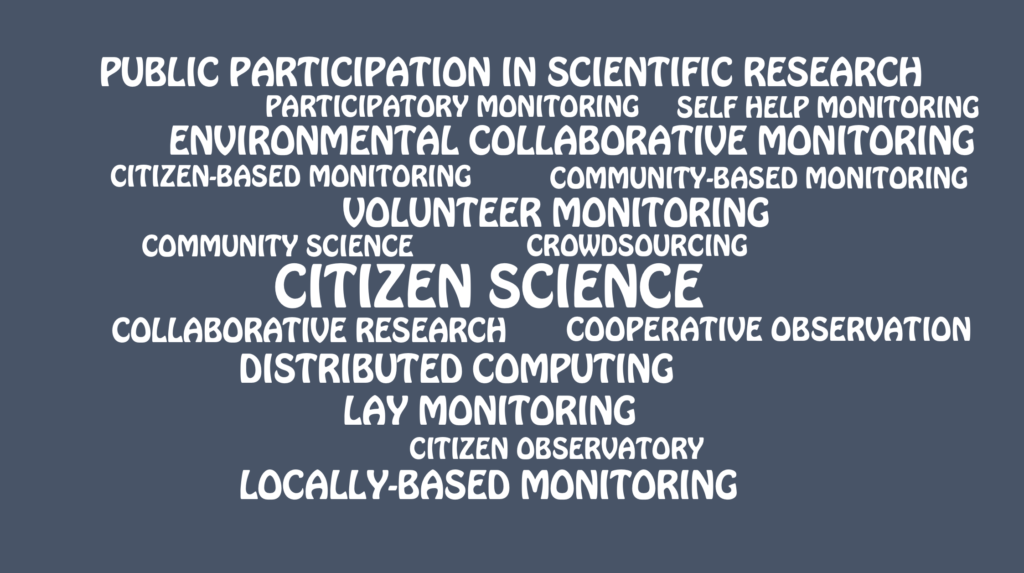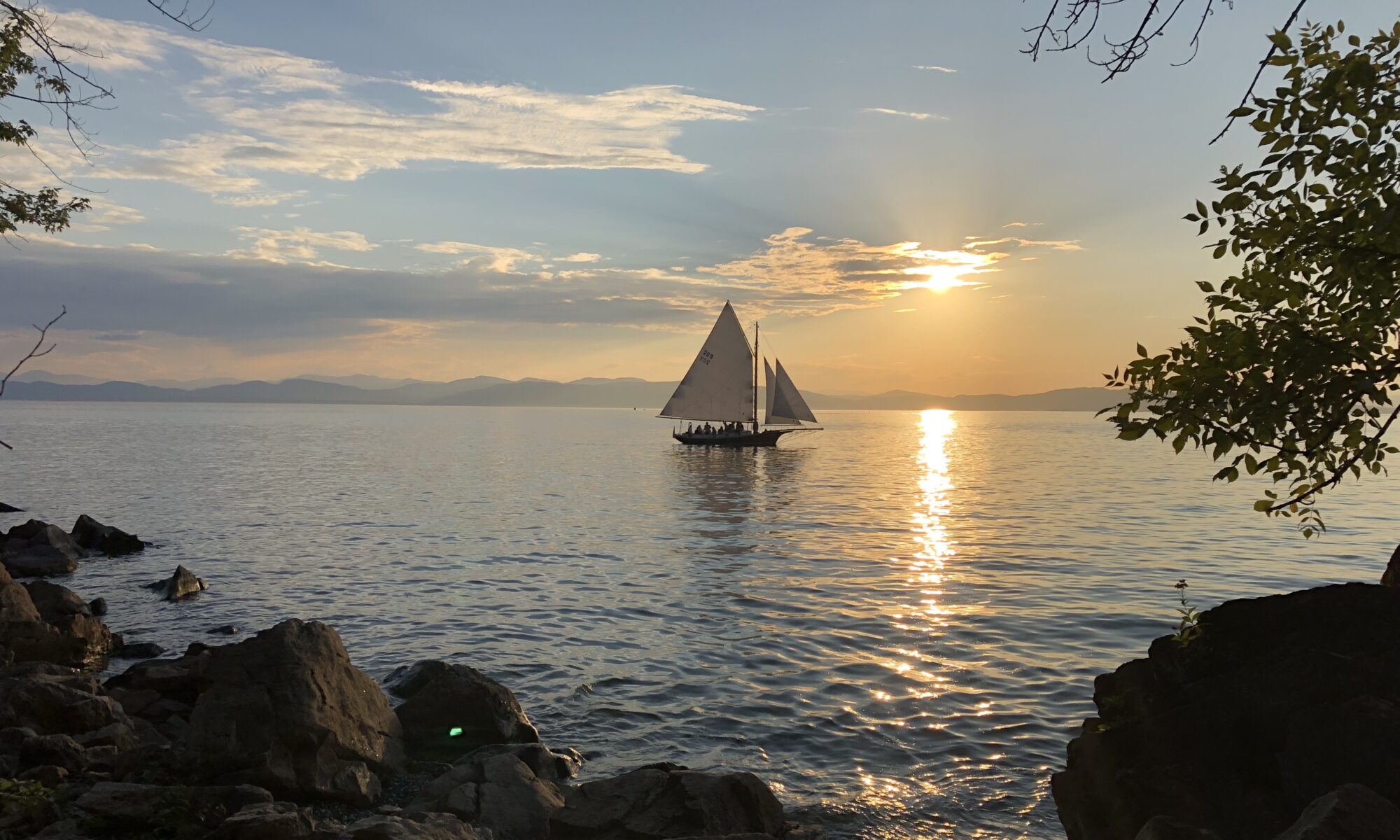In Dutch, a wesp is a wasp or a yellow jacket, but here at the University of Vermont, WESP is an acronym for a lab – the Watershed, Education, Science and Policy Lab to be exact. Led by Dr. Kristine Stepenuck (she/her/hers), we are located within the Rubenstein School of Environment and Natural Resources and associated with both UVM Extension and Lake Champlain Sea Grant.
Research of the lab follows two primary themes: 1) public participation in scientific research, otherwise known as volunteer monitoring or citizen science (along with a variety of other terms; for instance, see an ever-growing list of associated terms in the image below); and 2) broadly speaking, environmental resource management, especially as related to water resources, and related community action, response and resilience. This aspect of our work often, though not always, focuses on the Lake Champlain Basin.
If you aren’t familiar with Lake Champlain, it is sometimes mistakenly said to be the 6th largest lake in the United States. While it is large – 120 miles (193 km) long and 12 miles (19 km) wide at its widest – it’s not so big as to be the 6th largest in the U.S. (If we trust Wikipedia, the claim there is that it is the 13th largest by area and 14th largest by volume.)
Nonetheless, one boast Lake Champlain can make – which gives the WESP Lab a lot to work with – is that the land to watershed ratio in the basin is about 19:1. That is very large, especially as compared to the Great Lakes, which have land to water ratios in the range of 1.5:1 or 2:1. That means there is a huge land area draining to the lake, and therefore, the actions we humans take on the land have a significant impact on its water quality. The projects in which WESP Lab students and faculty engage generally have some application relevant to, or inform outreach to a specific target audience to help improve environmental conditions or economies. Learn more about who we are and what we do in the people section of this website.

